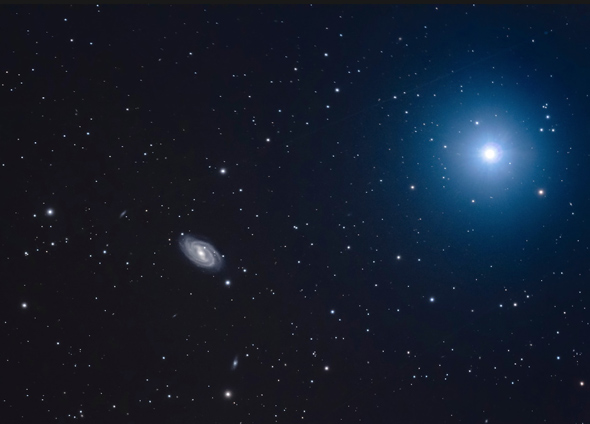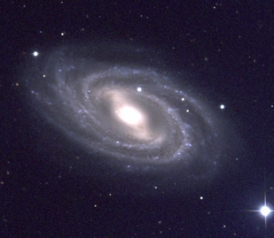Astrophoto: The Beacon and the Spiral
I do love me some spiral galaxy action, and generally when I post a picture of one it’s a magnificent, high-resolution close-up, detailing the spiral arms, star-forming gas clouds, and dark ribbons of dust splashed across them.
But sometimes you need to take the longer view to get a sense of the beauty therein. Hence this lovely shot of the galaxy M 109 by astrophotographer Alan Dyer:
Oh, my. The bright star to the upper right is Gamma Ursae Majoris, also called Phecda, the bottom left star in the Big Dipper’s bowl (if you picture it like a ladle). It shines like a beacon here because it’s about 1500 times brighter, all told, than the galaxy in the middle. But, to be fair, it’s also a million times closer!
M 109 is a barred spiral galaxy very roughly 80 million light years away. It’s a fairly typical object in its class, with arms intermediate between tightly-wound and widely flung open. The bar in the middle— the rectangular collection of stars—is big and well-defined, the consequence of the complicated interaction of the gravity of billions of stars all orbiting in a disk. Not all spiral galaxies have bars, but many do—our own Milky Way does.
Poking around the web to find more info on M 109, I found a long and excellent description at Universe Today, but to my surprise—given how close and bright it is— there aren’t nearly as many good, deep images of it as I expected. Some exist, to be sure (in fact I wrote a brief post about it a while back myself, and this one is particularly stunning), but I suspect this is an underrated galaxy for astrophotography. Sure, it’s a bit smaller and fainter than its splashier spiral neighbor, M51, but it’s not that much more diminutive. Any of my friends with access to some big ‘scopes want to accept this challenge?
In the meantime, check out more of Dyer’s amazing skills on his Flickr site, or on his Amazing Skies website.



